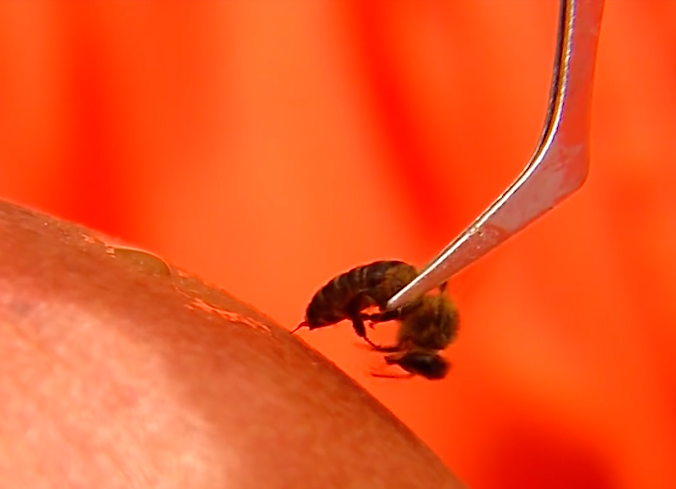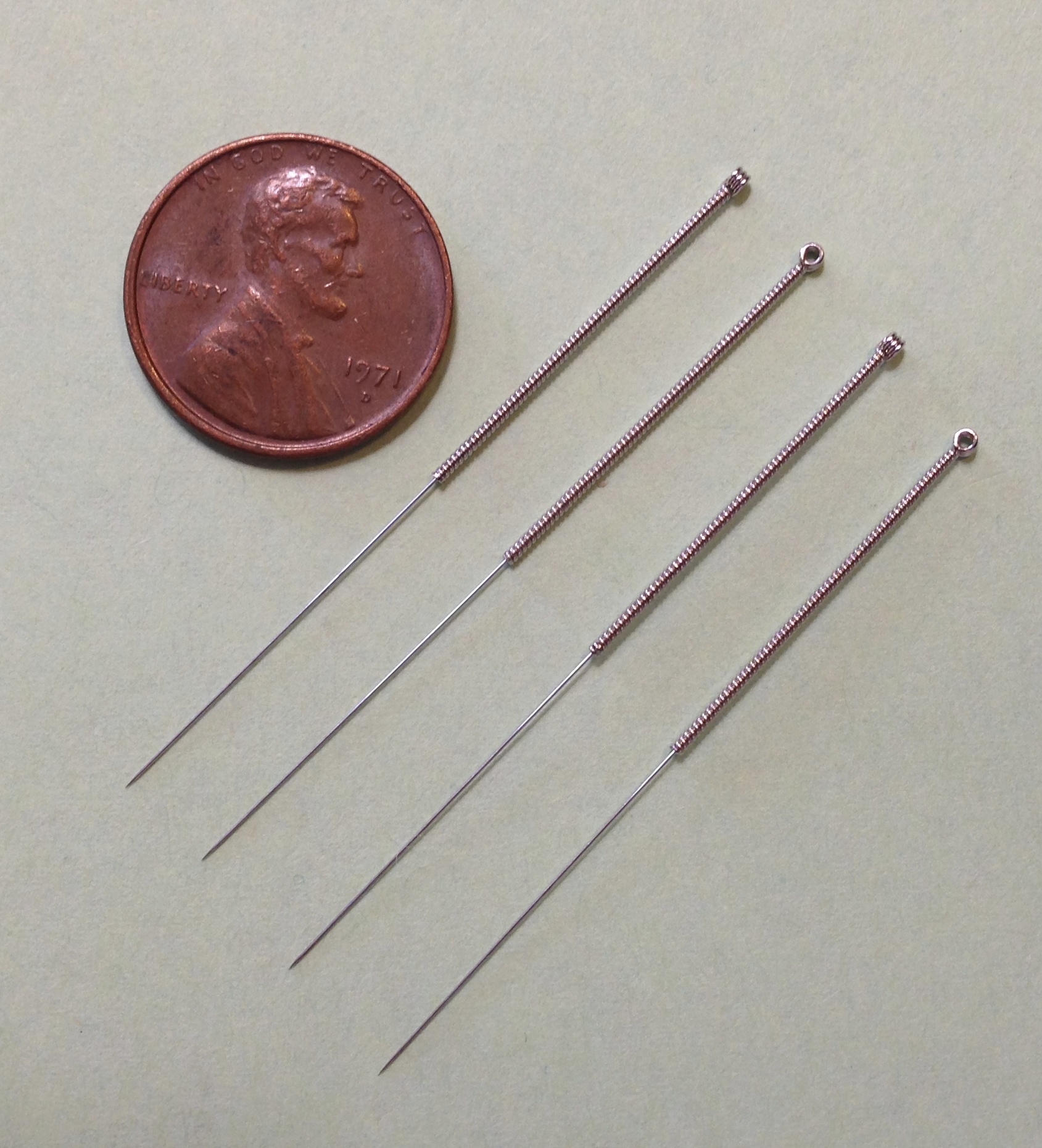 |
Apitherapy
Apitherapy is a branch of alternative medicine that uses honey bee products, including honey, pollen, propolis, royal jelly and bee venom. There has been no scientific or clinical evidence for the efficacy or safety of apitherapy treatments. Bee venom can cause minor or major reactions, including allergic responses, anaphylaxis or death. History References to possible medical properties of bee products can be found in Chinese, Korean, Russian, Egyptian, and Greek traditional medicine practices. Apitherapy has been practiced since the times of Hippocrates and Galen. Modern use of bee venom appears to have originated with Austrian physician, Philipp Terč, and his 1888 article "About a Peculiar Connection Between the Bee Stings and Rheumatism", but his claims were never tested in proper clinical trials. More recent alternative medicine practice is attributed to the Hungarian physician Bodog F. Beck who coined the term "bee venom therapy" in 1935, and to beekeeper Char ... [...More Info...] [...Related Items...] OR: [Wikipedia] [Google] [Baidu] [Amazon] |
|
Nikolay Artemov
Nikolai Mikhaylovich Artemov (; 24 January 1908 – 2 December 2005) was a Soviet Russian physiologist, Doktor Nauk in Biological Sciences (1969), Honorary Professor at the N. I. Lobachevsky State University of Nizhny Novgorod. He is known as the founder of scientific apitherapy. In 1957, the Ministry of Health (Soviet Union), USSR Ministry of Health sanctioned the use of bee venom in the treatment of certain ailments. It was the "Instruction for Bee Sting Venom Apitherapy" by N.M. Artemov (with Prof. G. P. Zaytsev from 2nd MSMI), who authored the document. Career He graduated from the Department of Physiology at the Faculty of Biology (Moscow State University), faculty of biology of the Lomonosov Moscow State University in 1931. From 1936 to 1941, he work at the :ru:Институт проблем экологии и эволюции имени А. Н. Северцова РАН, Severtsov Institute of Ecology and Evolution of the Russian Academy of Sciences. From 1943 to 1974, Ar ... [...More Info...] [...Related Items...] OR: [Wikipedia] [Google] [Baidu] [Amazon] |
|
|
Bee Venom
Apitoxin or bee venom is the venom produced by the honey bee. It is a cytotoxic and hemotoxic bitter colorless liquid containing proteins, which may produce local inflammation. It may have similarities to sea nettle toxin. Components Bee venom is a complex mixture of proteins and smaller molecules. The main component is melittin, which amounts to 52% of venom peptides One of the main allergens is phospholipase A2, which amounts to 12% and is an enzyme that catalyzes the hydrolysis of phospholipids, causing degradation of cell membranes. Adolapin contributes 2–5% of the peptides. Further protein components include apamin (2%), a neurotoxin, hyaluronidase (2%), which dilates blood vessels, increasing their permeability and facilitating the spread of the venom, mast cell degranulating peptide (2%), tertiapin, and secapin. Small molecules in bee venom include histamine (0.1–1%), dopamine and noradrenaline. Research Mark Crislip, a practicing infectious disease specialist ... [...More Info...] [...Related Items...] OR: [Wikipedia] [Google] [Baidu] [Amazon] |
|
 |
Honey
Honey is a sweet and viscous substance made by several species of bees, the best-known of which are honey bees. Honey is made and stored to nourish bee colonies. Bees produce honey by gathering and then refining the sugary secretions of plants (primarily floral nectar) or the secretions of other insects, like the honeydew of aphids. This refinement takes place both within individual bees, through regurgitation and enzymatic activity, and during storage in the hive, through water evaporation that concentrates the honey's sugars until it is thick and viscous. Honey bees stockpile honey in the hive. Within the hive is a structure made from wax called honeycomb. The honeycomb is made up of hundreds or thousands of hexagonal cells, into which the bees regurgitate honey for storage. Other honey-producing species of bee store the substance in different structures, such as the pots made of wax and resin used by the stingless bee. Honey for human consumption is collected ... [...More Info...] [...Related Items...] OR: [Wikipedia] [Google] [Baidu] [Amazon] |
|
USSR
The Union of Soviet Socialist Republics. (USSR), commonly known as the Soviet Union, was a List of former transcontinental countries#Since 1700, transcontinental country that spanned much of Eurasia from 1922 until Dissolution of the Soviet Union, it dissolved in 1991. During its existence, it was the list of countries and dependencies by area, largest country by area, extending across Time in Russia, eleven time zones and sharing Geography of the Soviet Union#Borders and neighbors, borders with twelve countries, and the List of countries and dependencies by population, third-most populous country. An overall successor to the Russian Empire, it was nominally organized as a federal union of Republics of the Soviet Union, national republics, the largest and most populous of which was the Russian SFSR. In practice, Government of the Soviet Union, its government and Economy of the Soviet Union, economy were Soviet-type economic planning, highly centralized. As a one-party state go ... [...More Info...] [...Related Items...] OR: [Wikipedia] [Google] [Baidu] [Amazon] |
|
 |
Acupuncture
Acupuncture is a form of alternative medicine and a component of traditional Chinese medicine (TCM) in which thin needles are inserted into the body. Acupuncture is a pseudoscience; the theories and practices of TCM are not based on scientific knowledge, and it has been characterized as quackery. There is a range of acupuncture technological variants that originated in different philosophies, and techniques vary depending on the country in which it is performed. However, it can be divided into two main foundational philosophical applications and approaches; the first being the modern standardized form called eight principles TCM and the second being an older system that is based on the ancient Daoist '' wuxing'', better known as the five elements or phases in the West. Acupuncture is most often used to attempt pain relief, though acupuncturists say that it can also be used for a wide range of other conditions. Acupuncture is typically used in combination with other forms o ... [...More Info...] [...Related Items...] OR: [Wikipedia] [Google] [Baidu] [Amazon] |
|
Anaphylactic Shock
Anaphylaxis (Greek: 'up' + 'guarding') is a serious, potentially fatal allergic reaction and medical emergency that is rapid in onset and requires immediate medical attention regardless of the use of emergency medication on site. It typically causes more than one of the following: an itchy rash, throat closing due to swelling that can obstruct or stop breathing; severe tongue swelling that can also interfere with or stop breathing; shortness of breath, vomiting, lightheadedness, loss of consciousness, low blood pressure, and medical shock. These symptoms typically start in minutes to hours and then increase very rapidly to life-threatening levels. Urgent medical treatment is required to prevent serious harm and death, even if the patient has used an epinephrine autoinjector or has taken other medications in response, and even if symptoms appear to be improving. Cause, mechanism, and diagnosis Common causes include allergies to insect bites and stings, allergies to foods ... [...More Info...] [...Related Items...] OR: [Wikipedia] [Google] [Baidu] [Amazon] |
|
|
Arthropathy
An arthropathy is a disease of a joint. Types Arthritis is a form of arthropathy that involves inflammation of one or more joints, while the term arthropathy may be used regardless of whether there is inflammation or not. Joint diseases can be classified as follows: * Arthritis :* Infectious arthritis ::* Septic arthritis (infectious) ::* Tuberculosis arthritis ::* Reactive arthritis (indirectly) :*Noninfectious arthritis ::* Seronegative spondyloarthropathy: :::* Psoriatic arthritis :::* Ankylosing spondylitis ::*Rheumatoid arthritis: :::* Felty's syndrome ::*Juvenile idiopathic arthritis ::* Adult-onset Still's disease ::* Crystal arthropathy :::*Gout :::* Chondrocalcinosis ::* Osteoarthritis * Hemarthrosis (joint bleeding) * Synovitis is the medical term for inflammation of the synovial membrane. * Joint dislocation With ''arthropathy'' in the name * '' Reactive arthropathy'' (M02-M03) is caused by an infection, but not a direct infection of the synovial space. (See al ... [...More Info...] [...Related Items...] OR: [Wikipedia] [Google] [Baidu] [Amazon] |
|
|
Adverse Effect
An adverse effect is an undesired harmful effect resulting from a medication or other intervention, such as surgery. An adverse effect may be termed a "side effect", when judged to be secondary to a main or therapeutic effect. The term complication is similar to adverse effect, but the latter is typically used in pharmacological contexts, or when the negative effect is expected or common. If the negative effect results from an unsuitable or incorrect dosage or procedure, this is called a medical error and not an adverse effect. Adverse effects are sometimes referred to as " iatrogenic" because they are generated by a physician/treatment. Some adverse effects occur only when starting, increasing or discontinuing a treatment. Using a drug or other medical intervention which is contraindicated may increase the risk of adverse effects. Adverse effects may cause complications of a disease or procedure and negatively affect its prognosis. They may also lead to non-compliance wi ... [...More Info...] [...Related Items...] OR: [Wikipedia] [Google] [Baidu] [Amazon] |
|
|
American Cancer Society
The American Cancer Society (ACS) is a nationwide non-profit organization dedicated to eliminating cancer. The ACS publishes the journals ''Cancer'', '' CA: A Cancer Journal for Clinicians'' and '' Cancer Cytopathology''. History The society was founded on May 22, 1913, by ten physicians and five businessmen in New York City under the name "American Society for the Control of Cancer" (ASCC). The current name was adopted in 1944. At the time of founding, it was not considered appropriate to mention the word "cancer" in public and information concerning this illness was cloaked in a climate of fear and denial. The top item on the founders' agenda was to raise awareness of cancer, before any other progress could be made in funding research. Therefore, a frenetic writing campaign was undertaken to educate doctors, nurses, patients and family members about cancer. Articles were written for popular magazines and professional journals. The ASCC undertook to publish their own journal, ... [...More Info...] [...Related Items...] OR: [Wikipedia] [Google] [Baidu] [Amazon] |
|
|
Cancer
Cancer is a group of diseases involving Cell growth#Disorders, abnormal cell growth with the potential to Invasion (cancer), invade or Metastasis, spread to other parts of the body. These contrast with benign tumors, which do not spread. Possible Signs and symptoms of cancer, signs and symptoms include a lump, abnormal bleeding, prolonged cough, unexplained weight loss, and a change in defecation, bowel movements. While these symptoms may indicate cancer, they can also have other causes. List of cancer types, Over 100 types of cancers affect humans. Tobacco use is the cause of about 22% of cancer deaths. Another 10% are due to obesity, poor Diet (nutrition), diet, sedentary lifestyle, lack of physical activity or Alcohol abuse, excessive alcohol consumption. Other factors include certain infections, exposure to ionizing radiation, and environmental pollutants. infectious causes of cancer, Infection with specific viruses, bacteria and parasites is an environmental factor cau ... [...More Info...] [...Related Items...] OR: [Wikipedia] [Google] [Baidu] [Amazon] |
|
|
Health Claim
A health claim on a food label and in food marketing is a claim by a manufacturer of food products that their food will reduce the risk of developing a disease or condition. For example, it is claimed by the manufacturers of oat cereals that oat bran can reduce cholesterol, which will lower the chances of developing serious heart conditions. Vague health claims include that the food inside is "healthy," "organic," "low fat," "non-GMO," "no sugar added," or "natural". Health claims are also made for over-the-counter drugs and prescription drugs, medical procedures, and medical devices, but these generally have a separate, much more stringent set of regulations. Health claims in the United States In the United States, health claims on nutrition facts labels are regulated by the U.S. Food and Drug Administration (FDA), while advertising is regulated by the Federal Trade Commission. Dietary supplements are regulated as a separate type of consumer item from food or over-the-co ... [...More Info...] [...Related Items...] OR: [Wikipedia] [Google] [Baidu] [Amazon] |